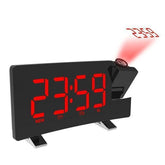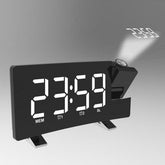BIG BEN: THE MOST FAMOUS CLOCK IN THE WORLD!
Big Ben is currently considered the most famous clock in the world. It has become the symbol of the city of London and the favorite monument of the British. On the other hand, the name Big Ben is often used, wrongly, to speak about the whole tower, whereas it is the name of the big bell at the top of the clock tower!
1) Big Ben: The story
A) The Clock Tower (Tower Elizabeth)
In 1834, a fire destroyed the Palace of Westminster, the place where the British Parliament sits. A commission was set up to define a new style for this palace. It was decided that the new Parliament buildings should have a tower and a clock. Architect Charles Barry was commissioned to design the new court.
The tower was first named "Clock Tower" and then changed its name in 2012 to "Elizabeth Tower" to celebrate the Diamond Jubilee (60 years of reign) of Elizabeth II, Queen of England.
The foundation stone of the clock tower was laid on September 28, 1843. The construction was quickly delayed and was finally completed in 1859, five years behind schedule. Its foundations were dug 3 meters deep, and it was built from the inside to the outside. There was no scaffolding visible to the outside world.
The size of the Elizabeth Tower is more than 96 meters, with 334 steps to climb up to the bell tower.
B) The bells - big ben
The bell tower of the clock tower is located above the dials at the height of about 60 meters above the ground. There are five bells in the belfry, the most famous of Big Ben, which is the big bell and weighs 13.5 tons.
Edmund DENISON designed the bells in 1852. The five bells were molded by the company John Warner and Son. However, an error occurred in the preparation of the mold, and as a result, the largest bell weighed 16 tons instead of 14 tons, 2 tons more than the expected weight. It was to be called "Royal Victoria." As the clock tower was not ready for the bell, it stayed at the "New palace Yard." Still, it was hung and struck regularly. Unfortunately, the bell never made it to the top of the clock tower because it could not withstand the hammering and cracked. The crack was 1.20 meters long. Edmund DENISON and the manufacturer of the clock fought over who was responsible for the problems with the bell.
A second bell, the one to be named "big ben," had to be created to replace the previous one. It began ringing for the first time in July 1859. However, the disaster happened again. Indeed, two months later, this second bell also gave way under the force of the same hammer. The big bell was never re-melted. It was decided to turn the ball a quarter turn to allow the hammer to strike on an entire surface and with a lighter hammer than the first one. Today, it is still the same bell.
C) The big ben clock
The clock was designed by Edmund DENISON in association with Sir George AIRY and the watchmaker Edward DENT. Edward DENT died before the project was completed, his son Frederick DENT completed it. The clock mechanism was completed in 1854.
During the Second World War, the clock dials were left off to comply with the rules prohibiting war. They were turned back on in 1945, at the end of the war.
On the night of August 5, 1976, a mechanical failure seriously damaged the Great Clock. The clock mechanism exploded. Big Ben was silenced for almost nine months. Repairs were completed in time for the bells to ring on the occasion of the Silver Jubilee (25 years of reign) of Queen Elizabeth II in May 1977.
The dial of the clock consists of 312 pieces of opal glass. The numbers on the clock are 60 centimeters high. The hour hands measure 2.70 meters and weigh more than 100kg. The seconds hands are approximately 4.20 meters long. The dials measure 7 meters in diameter each.
At the bottom of each of the four dials of the clock is inscribed in Latin the following phrase "Domine salva fac Reginam nostrum Victoriam primam", which means "O Lord, protect our Queen Victoria II."
2) Big ben: Origin of the name
The origin of the name Big Ben is not really known but there are two different theories.
According to the first theory, the tower would have been named in honor of Benjamin Hall. Benjamin Hall was a politician who served for about 30 years in the House of Commons. He was nicknamed "big ben" because of his great height. He oversaw, among other things, the reconstruction of the Houses of Parliament after the fire of 1834. Throughout his career, Hall was also appreciated for his involvement in dealing with the cholera epidemic of 1854. His name is inscribed on the bell inside the clock tower. This seems to be the most likely theory.
According to the second theory, the name was given in honor of a heavyweight boxing champion of that time, Benjamin Caunt, also known as "Big Ben".
3) Big ben: Location
To get to Big Ben by public transport you have several possibilities:
The London bus lines that pass in front of the tower are: 148, 24, 453.
The closest subway station is Westminster station, it is right in front of the tower. The station is served by the Julilee, District and Circle lines.
The exact address is: Westminster, London SW1A 0AA, United Kingdom.
4) Big Ben : Renovation work
Renovation work on big ben began in August 2017 and will be completed in 2021. During these four years, Big Ben will not ring except for certain exceptional cases. Nevertheless, the clock will continue to run thanks to an electric mechanism.
The works are estimated at more than 69 million euros (initially the announced amount was about 30 million euros).










































